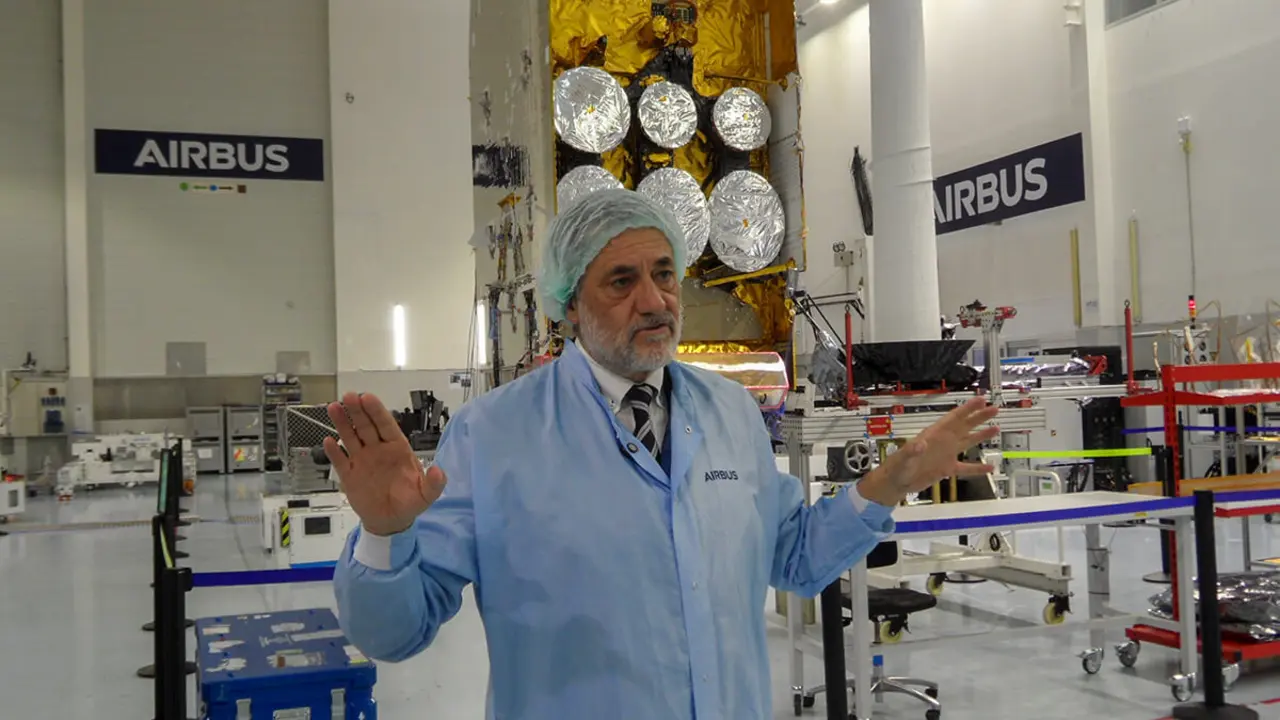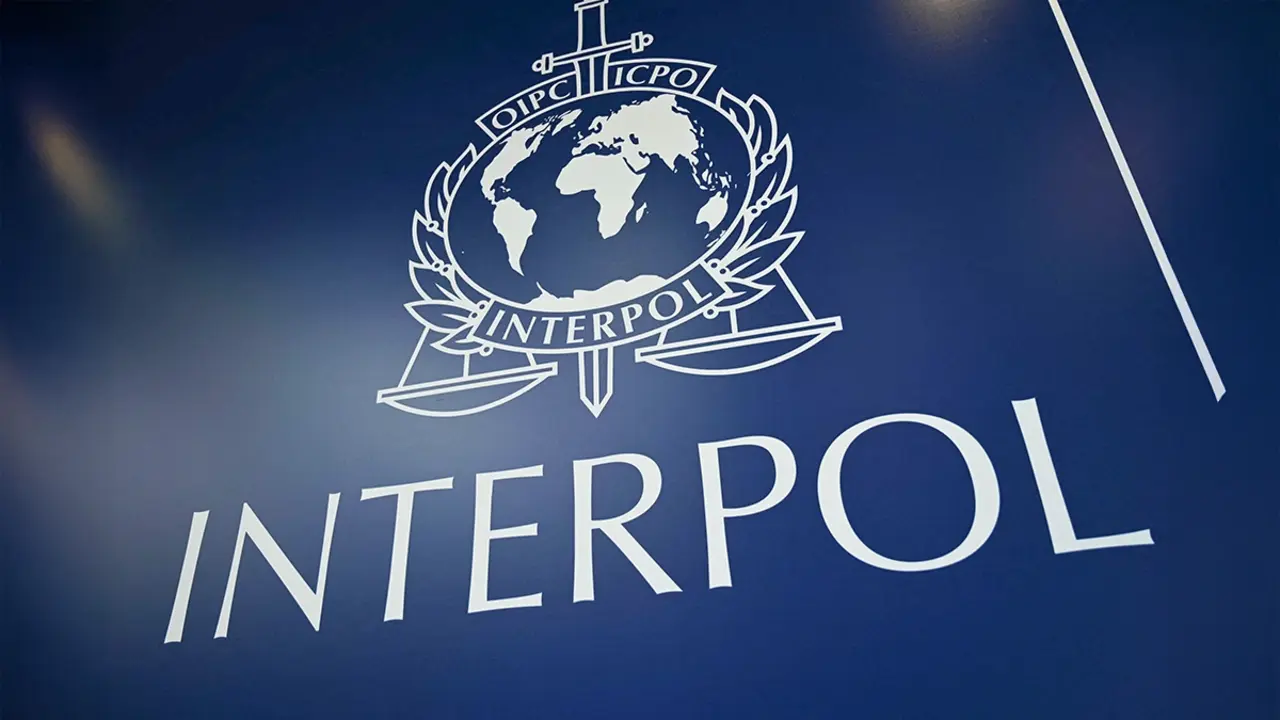Spain's first nuclear explosion-resistant satellite will take off in September 2024
![Foto1SpHisdesatSpainsatNgNuclearCreAirbusDs[23]](/asset/thumbnail,1280,720,center,center/media/atalayar/images/2023/09/18/2023091811033561335.jpg)
The CEO of the Spanish strategic services company Hisdesat, Miguel Ángel García Primo, has just confirmed in Santander that the launch of the first Spanish communications satellite capable of surviving the effects of a nuclear explosion will take off "next summer, at the end of September 2024".
García Primo confirmed that the first of the Spainsat New Generation family of satellites - the Spainsat NG I - has special shielding and shielding to prevent its components from degrading to such an extent that the system could become unusable in the hypothetical case of an atomic explosion in the atmosphere.
The head of Hisdesat commented on the above and other company plans at the restricted access seminar "Satellites as a key element for security and defence and government applications", which was held at the European University of the Atlantic in the Cantabrian capital from 6 to 8 September under the auspices of the Multisectorial Association of Information, Communications and Electronics Technology Companies (AMETIC).

Weighing 6.1 tonnes, the size of a large 7-metre-long van and with an estimated useful life of 15 years, the new Spanish satellite will fly to its lofty position at an altitude of 36,000 kilometres aboard an American Falcon 9 vector from billionaire and businessman Elon Musk's SpaceX company. It will depart from the Atlantic coastal area of Cape Canaveral in the state of Florida, the main space launch base in the United States.
What Hisdesat's top executive has not yet revealed is from which of the two possible sites at Cape Canaveral the Falcon 9 will take to the sky with the Spanish satellite as its exclusive passenger. The federal administration has assigned Elon Musk's company SpaceX two take-off platforms on the coast of Florida for its commercial and institutional flights.

First integrated space communications module in Spain
One is at Kennedy Space Center under NASA control and is Launch Complex 39A or LC-39A. The other is nearby, but under the governance of the US Space Force. It is Launch Complex 40 or LC-40. Whether it will be one or the other depends on many factors and it is quite possible that neither Miguel Ángel García Primo nor even Elon Musk will know in a year's time which site will be chosen.
What García Primo does know and has anticipated in Santander are the immediate activities of his company with respect to Spainsat NG I. With the space branch of Airbus France and Thales Alenia Space France as prime contractors for its new spacecraft, the flight model "is practically completed". "It is now at Airbus Space Systems France's Astrolabe industrial plant in Toulouse," confirms the company.
The completed Spainsat NG I communications module arrived at the Astrolabe facility in Toulouse - the aerospace capital of France - in early June with technologies provided by national companies GMV, Indra, Sener and Tecnobit. It travelled in a special road transport from the important factory that the French-Italian company Thales Alenia Space - which Stéphane Terranova has been directing for exactly two years - has in the Tres Cantos Technology Park (Madrid).

Since December 2021, the hundreds of electronic and radio frequency components and equipment that make up the satellite's communications module have been integrated at the site located 20 kilometres from the Spanish capital. The result is a structure weighing nearly 2 tonnes and 6 metres long, "the largest integrated satellite system in Spain", says Thales Alenia Space.
The Spainsat NG programme consists of two twin satellites and a ground control and monitoring component - developed by GMV - and its main purpose is to replace, secure and improve the encrypted and secure communications of the high State authorities and commanders of the Spanish Armed Forces, especially military units deployed in areas of operations outside the national territory.

Cutting-edge technologies manufactured in Madrid
Both devices will provide connectivity in the X, military Ka and UHF bands and the keys to the provision of their services are all technological. Each platform has a pair of Digital Transparent Processors (DTP), which makes them a kind of software-defined satellite. They incorporate sophisticated equipment to be resistant to interference, known as anti-jamming, and are protected against spoofing attempts.
X-band is the responsibility of Airbus Space Systems España. Its core element in the framework of the European Space Agency and Hisdesat's PACIS-3 programme is an advanced active antenna that is reconfigurable in reception and transmission. Called SARA, it has geolocation capabilities and can generate 16 independent communications beams of different shapes, sizes and orientations.

In addition, it can distribute its power in a flexible manner. Thales Alenia Space España has developed the military Ka-band equipment - for the transmission of large volumes of data - and also the UHF band, which is of special interest to the Air and Space Forces.
Spainsat NG II remains in Tres Cantos in its final stages of assembly and integration. Its work plan stipulates that it will be sent to Toulouse at the end of this year. As with its big brother, it will be attached to the service module which is also nearing completion in the capital of the Haute-Garonne department. If the second Spainsat NG is on schedule, it will be launched into orbit in the second half of 2025.

Both spacecraft also incorporate the latest technologies in power generation and propulsion. They have efficient, large solar panels and an efficient electric motor to keep them in geostationary orbit and their signals will cover the United States, South America, the Middle East, Africa, Europe and parts of Asia.











